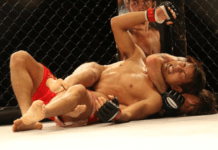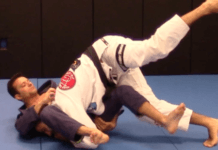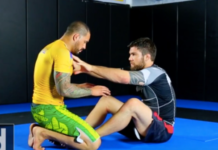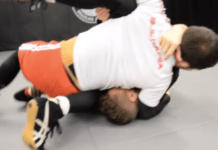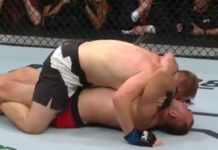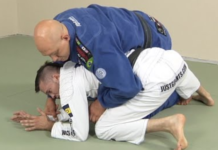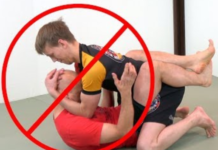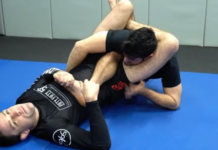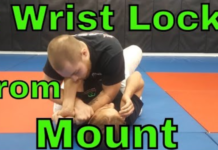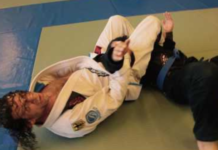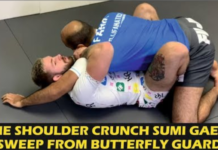The basics in Brazilian Jiujitsu are very important to master. So, you have moves like the triangle, the armbar, the kimura, Americana, and the rear naked choke. These are the most fundamental of moves, and if you really wish to master the art and science of BJJ, then you best put in the hours so that you will learn all of these moves. There are also important fundamental positions such as the guard, the half-guard, the side-control, mount, and taking the back positions – and all of these are fundamentally important as well. It would take time before you’re able to do the flashier moves, such as the gogoplata.
Gogoplata Technique Breakdown
After you have mastered these basic positions and moves, you might want to begin to use a bit flashier moves. These moves tend to require precision, timing, and sometimes even some prerequisite body qualities such as body flexibility. But if you put the time in practicing them – you will undoubtedly master them as well. One such flashy move is the aforementioned gogoplata.
Even though it’s flashy, it’s also very effective. It’s an air choke, meaning that you will constrict the air flow in your opponent’s throat, which will eventually lead to either a tap out or a passing out. Since one of the best ways in which we humans learn is by visual demonstrations, we recommend you to check the following video:
It’s a video of arguably the most famous gogoplata made in a professional MMA bout, and the battle is between Nick Dias and Takanori Gomi, in the now defunct organization of Pride. The match was won by Nick Diaz, but the decision was later overturned when it was discovered that Nick Diaz has been smoking marijuana before the bout (go figure).
If you see the video, you will immediately realize that the move itself requires great levels of flexibility in your hips and in your legs. Nick Diaz starts off from the full guard and then puts his leg over his opponent’s shoulder – which is much like the fundamental move of omoplata. But then he puts his shin directly under his opponent’s throat, while he presses with his other leg on top of the opponent’s head. All of these things are very important in executing the move correctly, as if you don’t have your shin underneath your opponent’s throat – then there’s no choke, and if you don’t press with the other leg on top of your opponent’s head – then he or she will be able to posture up with no problems, and again – there is no choke. But if you execute all of the right things at the right time you will make one of the most impressing moves that you can make.
Again – you will need to work long and hard on your flexibility to pull the move off. Some people are genetically endowed in this sense, such as UFC legend BJ Penn, as it’s often said about him that he has knees made of rubber. But most people have standard flexibility and they have a really hard time in pulling high guard, or even worse – rubber guard. But you will have to move your legs in this way, and this requires great flexibility.
And the best way to bail from this move is to not allow your opponent to get in this position. The good thing about this is that the move can be relatively easy to spot, as your opponent will need time to set up the move. This is the chance to step away into a more favorable position. If your opponent, however, has made the right moves and he’s just about to put the shin under your throat – then it’s best to put a hand or two so that you can block the shin, and work from there. This might be a bad thing to do in an MMA match, however, because this setup would mean that your opponent has a free hand with which he can strike you in your unprotected head, while you’re struggling to prevent the choke. So, be sure to bail out of this position as quick as possible.
So, the gogoplata is not a basic move – but it doesn’t mean that it has no place in your arsenal. If you find that you’re flexible enough, then you will do well to incorporate the gogoplata – and who knows, you may end up tapping someone in a tournament bout.

